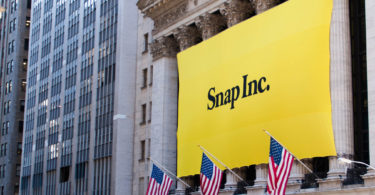This article was originally posted here
Make sure you save a copy of this letter.
It's a step-by-step, paint-by-numbers guide to making a fortune in stocks. No, I can't promise that your investments will pan out as well as a few of mine have over the last few years. But I believe anyone is capable of becoming a world-class investor. You only need to know three things.
These are the things I know work – no matter what else is happening in the world or in the markets. Let me explain…
Investing is a simple game.
The goal is to get the most in return for having given the least in exchange. Any serious study of this process will reveal just a few variables control the outcome.
First, the amount of capital employed is important. Thus, the cardinal rule is: Don't lose money. Money lost cannot be invested. Money lost will not compound.
Second, time matters. The duration an investment may be held continuously with dividends reinvested is critical.
And the third important factor is the rate of compound growth.
What's funny about this list is how simple the game really is… and how few people pay any attention to the most basic rules. I doubt many subscribers consider these variables before they buy a stock. What most people consider is simply, “Will this stock go up? By how much? And when should I sell?”
The questions they should be asking are almost the complete opposite.
They should try to figure out…
- How fast are these shares likely to compound, assuming I reinvest all of the dividends?
- How long will I be able to hold this company safely?
- And most important, what's the most I can safely pay for this stock?
I share these ideas with a large amount of trepidation. These are not ideas that sell newsletters. You, gentle reader, may expect me to deliver the name of a stock that will surely double in the next month, then double again next year. Believe me, if it were that easy, I'd oblige. But the truth is a bit more complicated…
There's one exception… one sure way to get rich. And that is to buy capital-efficient businesses that have long-lived products and are capable of increasing payouts year after year.
This approach is, without question, the best way to invest. It's exactly the approach master investor Warren Buffett uses. But it's difficult to explain. Worst of all… once you understand how it works, it's just too simple.
All you have to do is buy the kind of companies that require very little capital to operate and grow their businesses and therefore produce excess capital that they return to their owners (the shareholders). Then you reinvest that capital into more shares. Rinse and repeat. It's not much harder than washing your hair.
And that means it's boring. But the truth is, using this kind of a strategy over time will produce returns that dwarf the gains you're likely to make speculating, even if you're a great speculator.
Best of all, my approach, which is based on capital efficiency, is totally safe and requires almost zero effort. The whole trick lies in understanding which companies are capital-efficient and have good long-term prospects.
Once you know that… you only buy when you can get the shares at such a low price that they essentially carry no risk.
So how much should you pay for a stock like this, or any other long-term investment? This ends up being the most important variable, because the first rule of investing is “don't lose money.” Remember… money you lose doesn't compound.
Here's an easy rule of thumb to use when trying to figure out a safe price to pay for a stock… Just figure out how much money it would take to buy back every share at the current market price and add in the total net debt of the company.
The number you'll end up with is called “enterprise value.” That's the figure it would cost (in theory) for the company to buy itself.
Next, just figure out if there's any realistic way the company could afford to buy itself. Few companies actually go private this way… But bear with me. Imagine a company with an enterprise value of $15 billion. For the company to borrow this much money, it would have to afford roughly $1 billion a year in interest payments (assuming 7% interest).
If that's more than its operating income… it can't currently afford to buy itself. But if its operating income covers that amount, you've got yourself a winner. And your chances are better when shares are cheaper, of course – because this pushes down the enterprise value.
Doing this kind of analysis shows whether a company could realistically repay all of its debts and all of its shares. Assuming it can afford to do both, there's no fundamental difference between the risk of its stock and the risk in its bonds – because all the bonds and shares could be repurchased.
And that means on a fundamental basis, you're getting all the upside of the shares – all the upside of being an owner – with the same low risk of being a creditor.
I call this buying at a “no-risk” price. There's no additional risk to buying the equity compared with the debt.
This is the best analysis to consider before you buy any stock – but especially one you're buying to hold for the long term. You have to make sure you will be comfortable enough to wait for the payoff.
And the only way to do that is to buy capital-efficient companies… at good, safe prices.
Regards,
Porter Stansberry
Editor's Note: Leading news source says this has created 20,000 millionaires
Something big is happening in America…and almost no one is paying attention. A multimillionaire has written a fascinating analysis explaining how so many are now getting rich. His write up is posted free on this website here…







